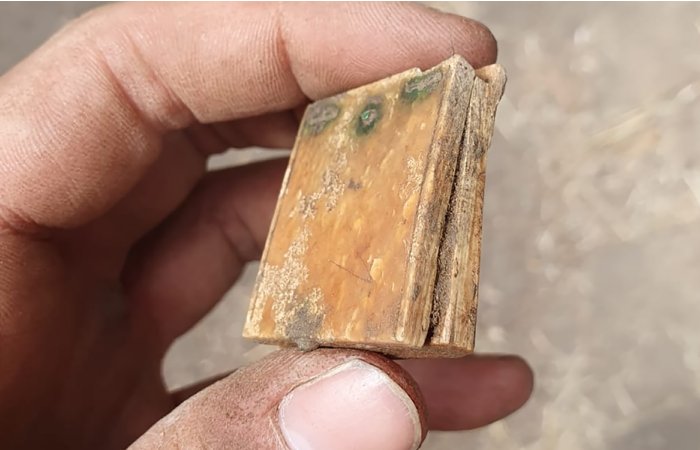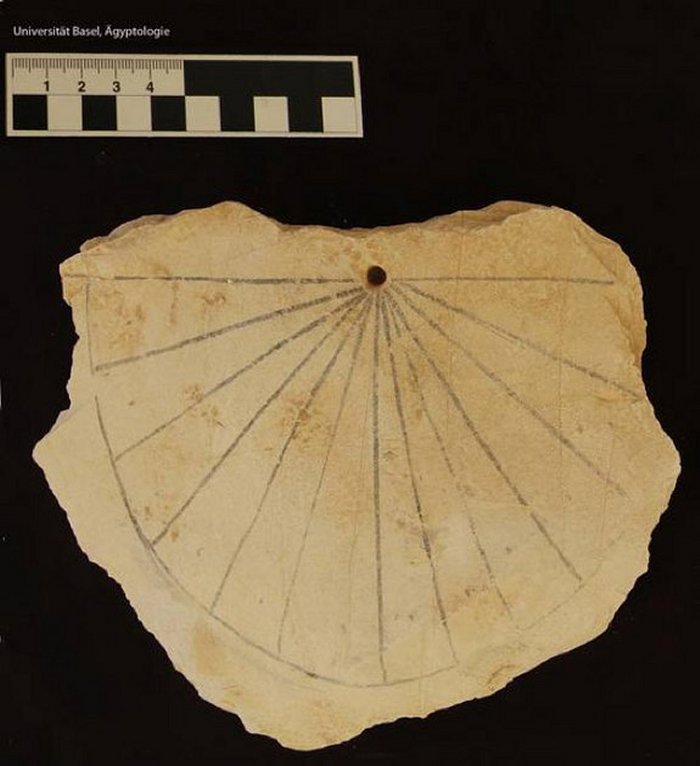Jan Bartek – AncientPages.com – An extraordinary Medieval sundial has been discovered in the old town of Marburg, Germany. Students at Marburg University had been excavating the site of a church in the old town when they came across the pocket-sized sundial.

An extremely rare sundial from the 1500s, found in a German town. It’s made from wood and bronze. Credit: Felix Teichner
The Medieval sundial made of wood and bronze is barely larger than a matchbox. The tiny clock belonged to a member of the order called the Brethren of the Common Life, a religious community established in the late 14th century in the Netherlands by Gerard Groote, a Dutch Catholic deacon.
Until 1527, they maintained the monastery building in the upper town of Marburg, which is the focus of the excavation.
“The sensational find provides a clear insight into the meeting of a high level of knowledge in astronomy and mathematics with specialized craftsmanship on the threshold from the Middle Ages to modern times,” explains the head of the educational excavation,” Professor Dr. Felix Teichner said in a press statement.
According to Professor Teichner, it’s the first time an object like this has been found in Hesse, the German state, and not many such sundials are left.
Medieval people used many instruments to keep track of time. During the Middle Ages, a combination of water clocks, sundials, and candle clocks could tell time, but none could determine the time to the minute. As explained previously on Ancient Pages, “minutes were simply not used to measure time during the Middle Ages. Both the medieval and modern “day” (sunrise to sunrise) contain 24 hours, but medieval hours varied in length with the month and the time of day.
While the best water clocks told time to the quarter hour, people could tell time to the minute until the wide use and improvement of mechanical clocks.”

The world’s oldest known sundial, from Egypt’s Valley of the Kings (c. 1500 BC), was used to measure work hours. Credit: Public Domain
The earliest household clocks known are sundials that ancient Egyptians, Babylonians, Greeks, and many other civilizations used. Consisting of a flat plate and a gnomon, which casts a shadow on the plate when the sun shines, sundials could tell the time by measuring the position of the sun throughout the day.
The oldest known sundial in the world was made in Egypt and dated back to 1500 B.C.
Written by Jan Bartek – AncientPages.com Staff Writer





